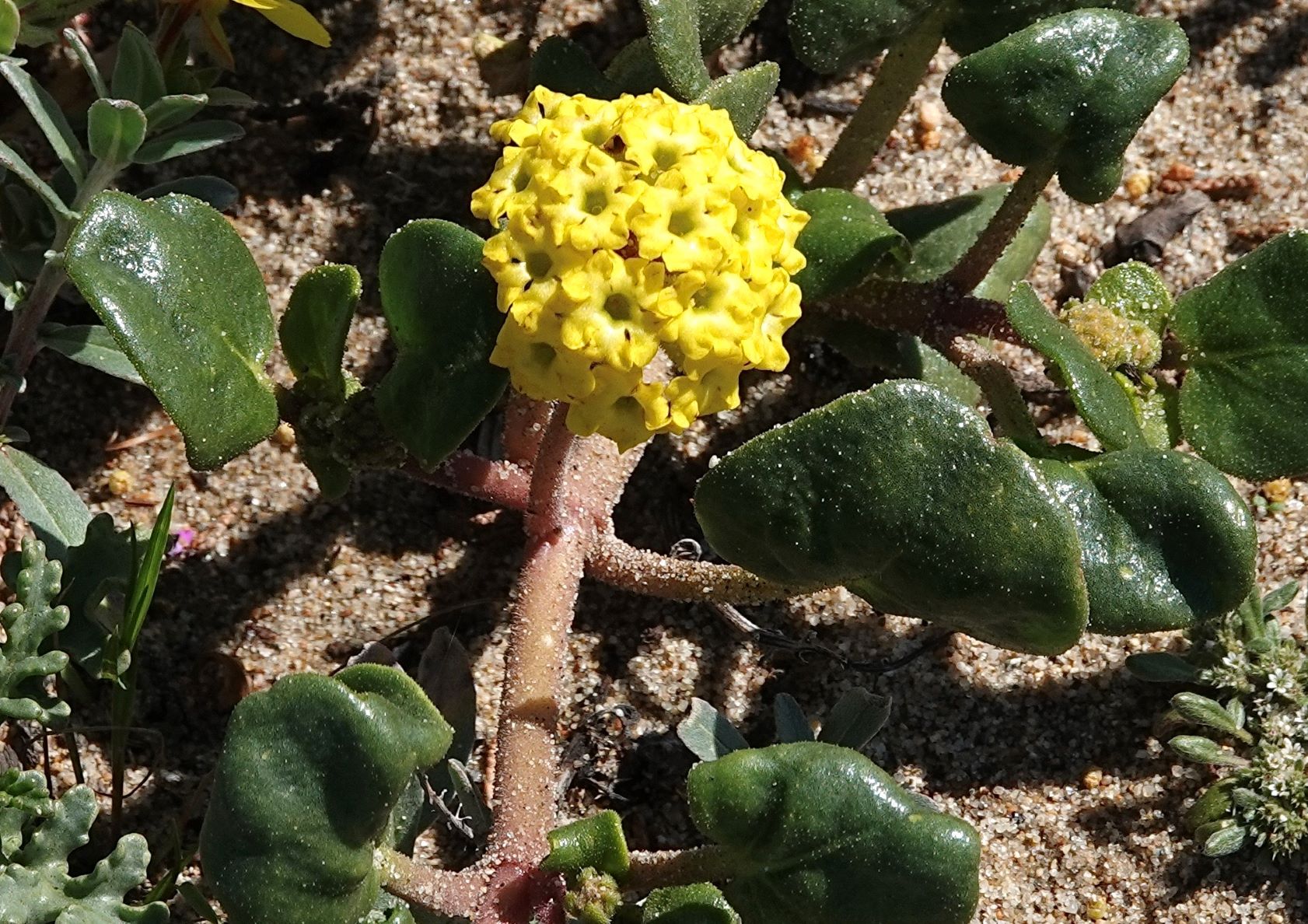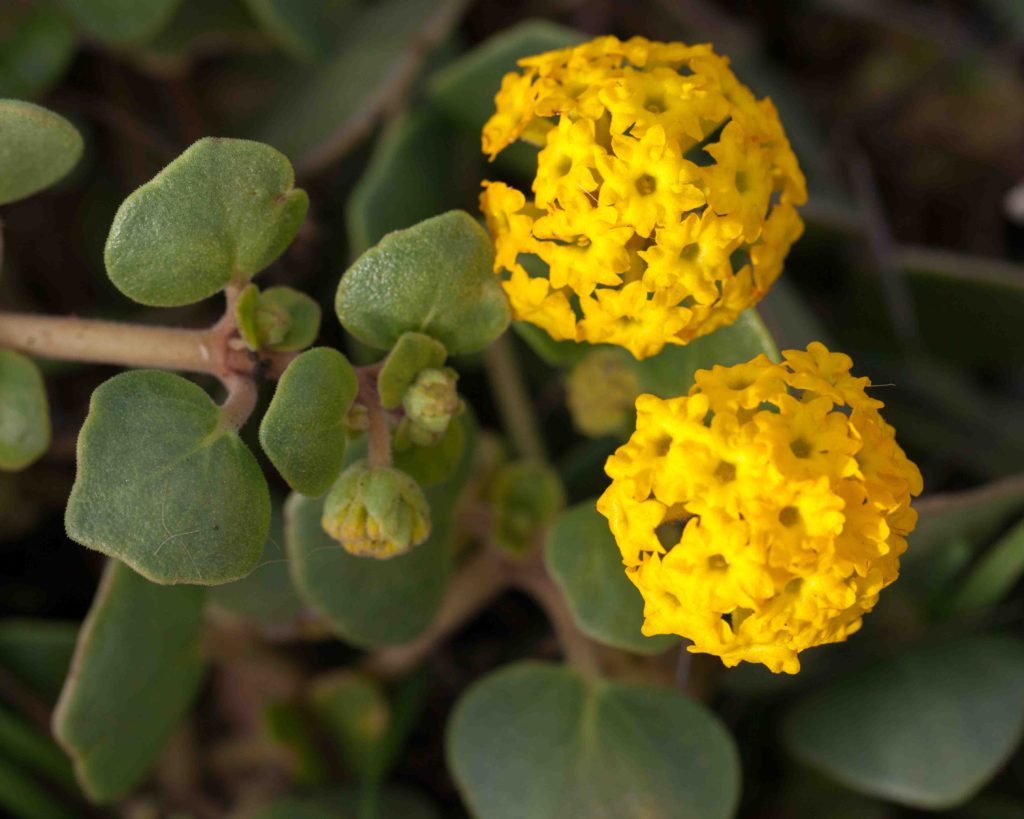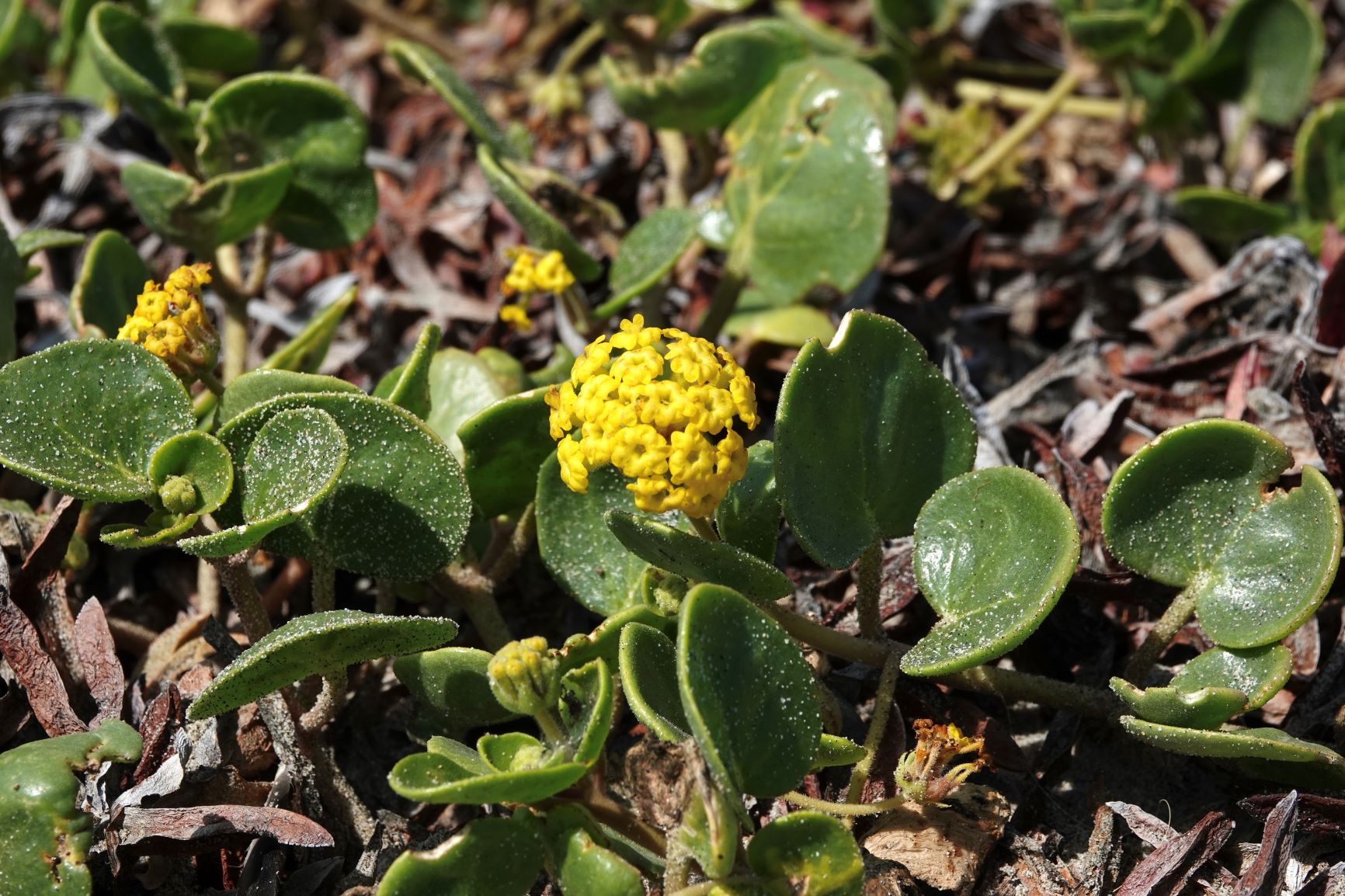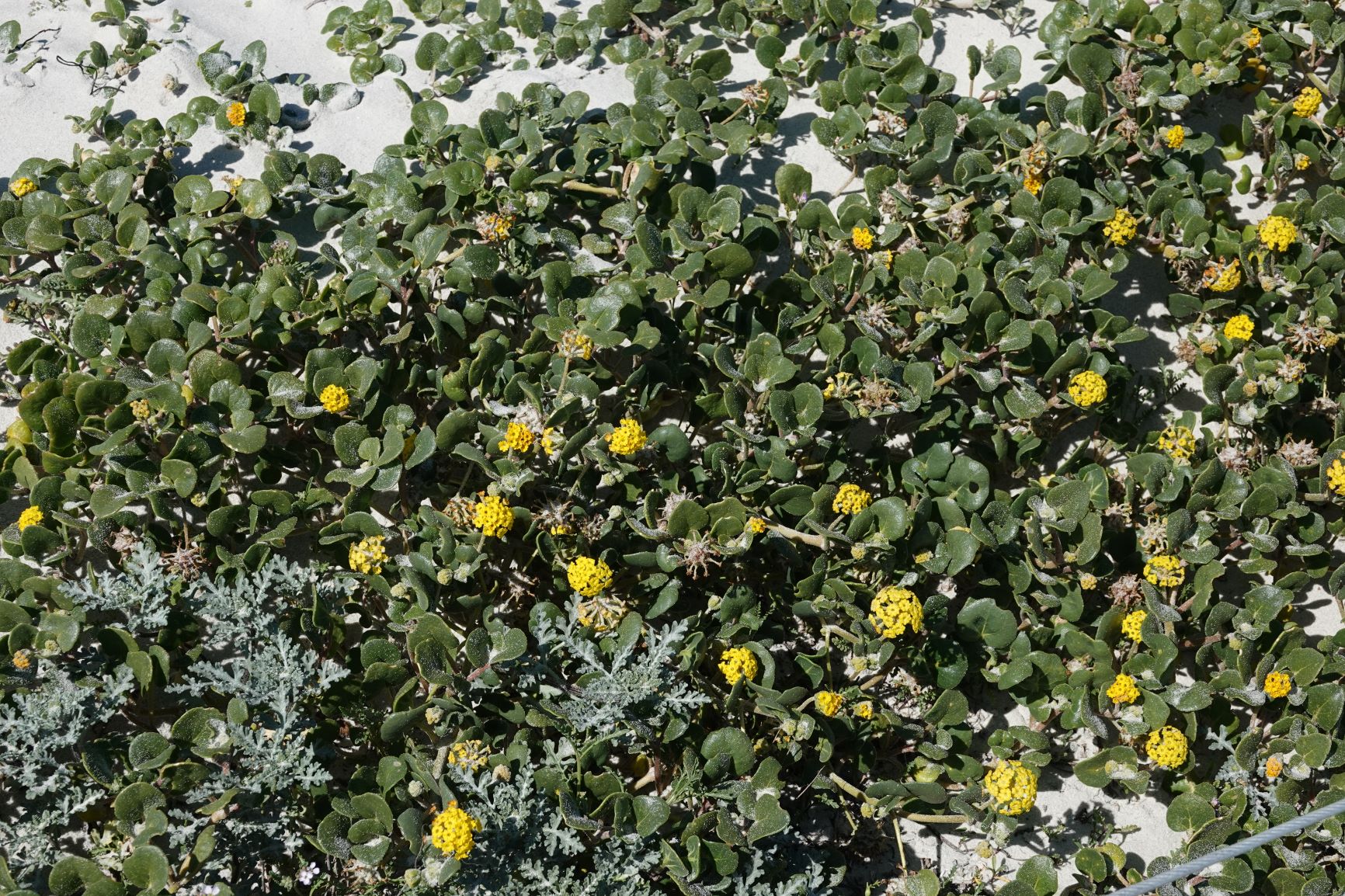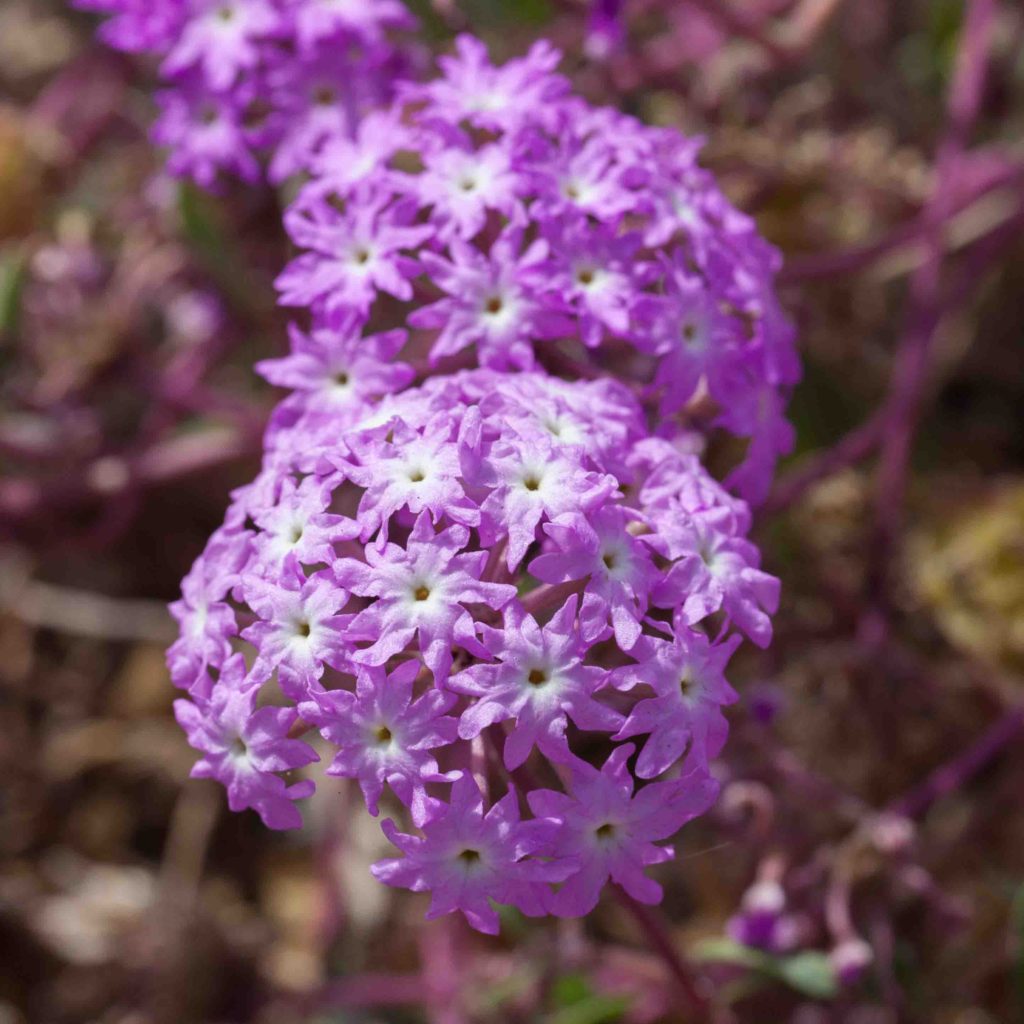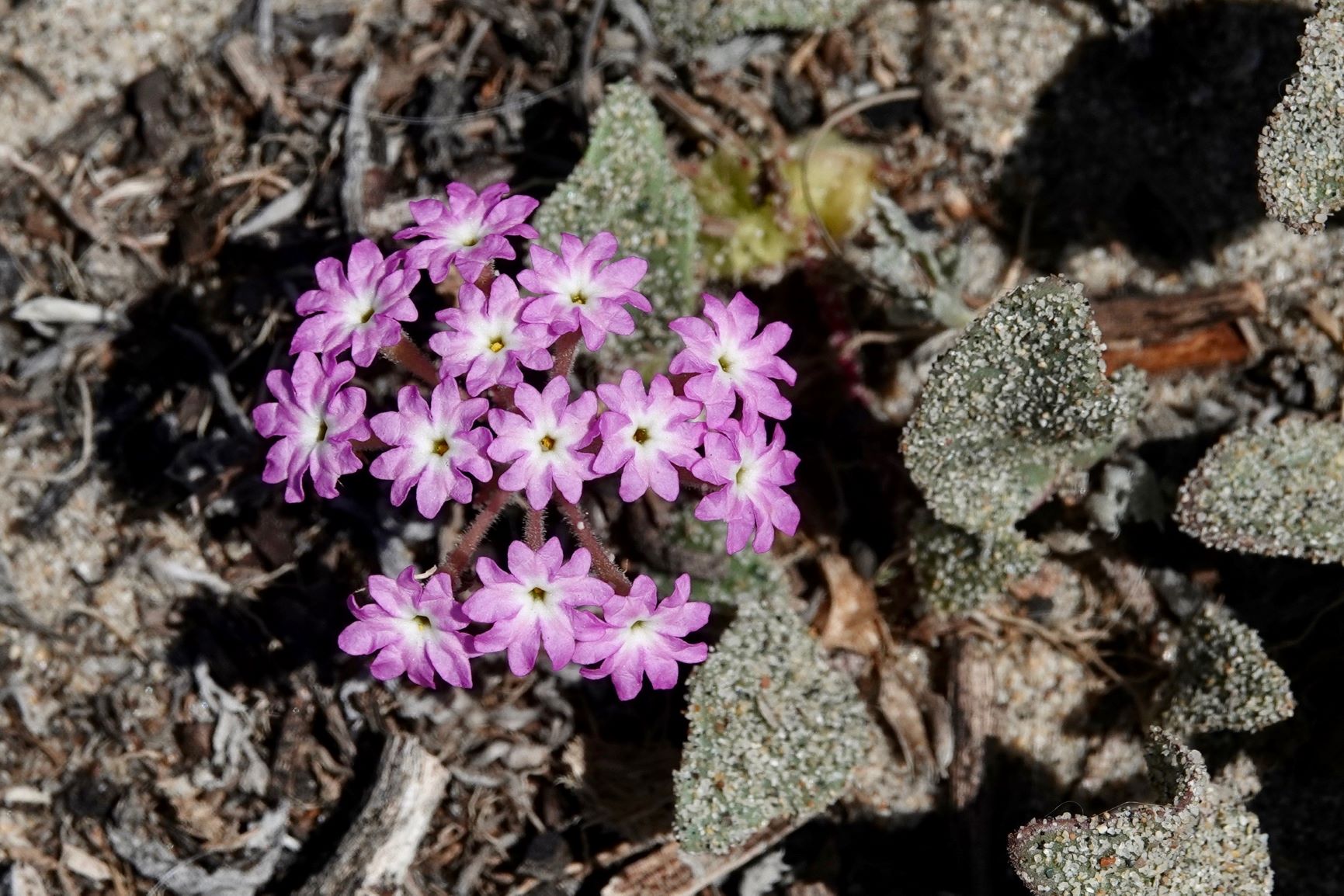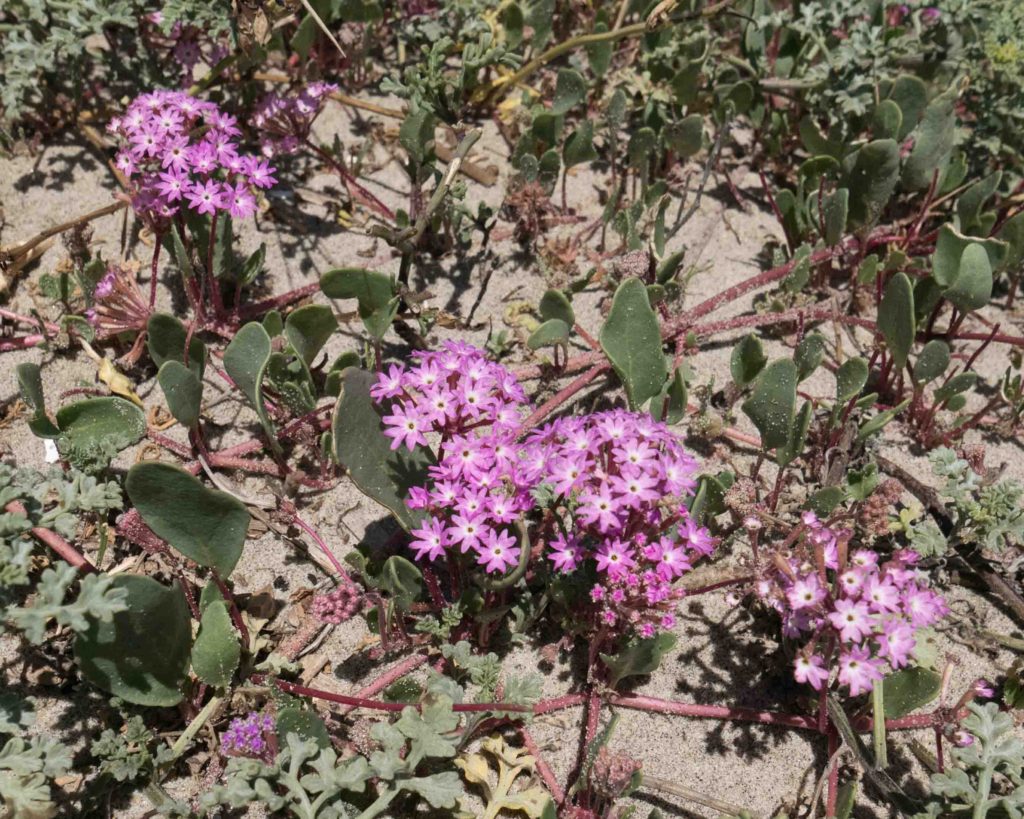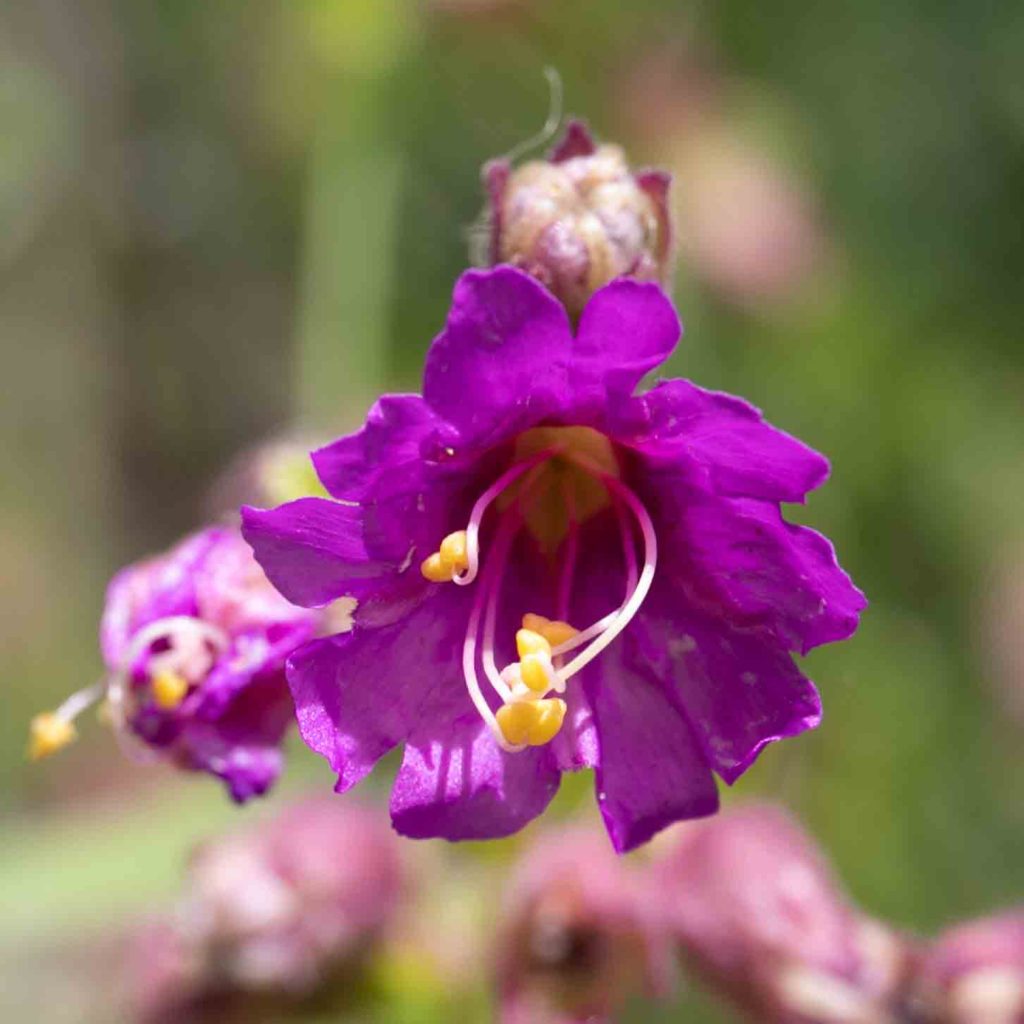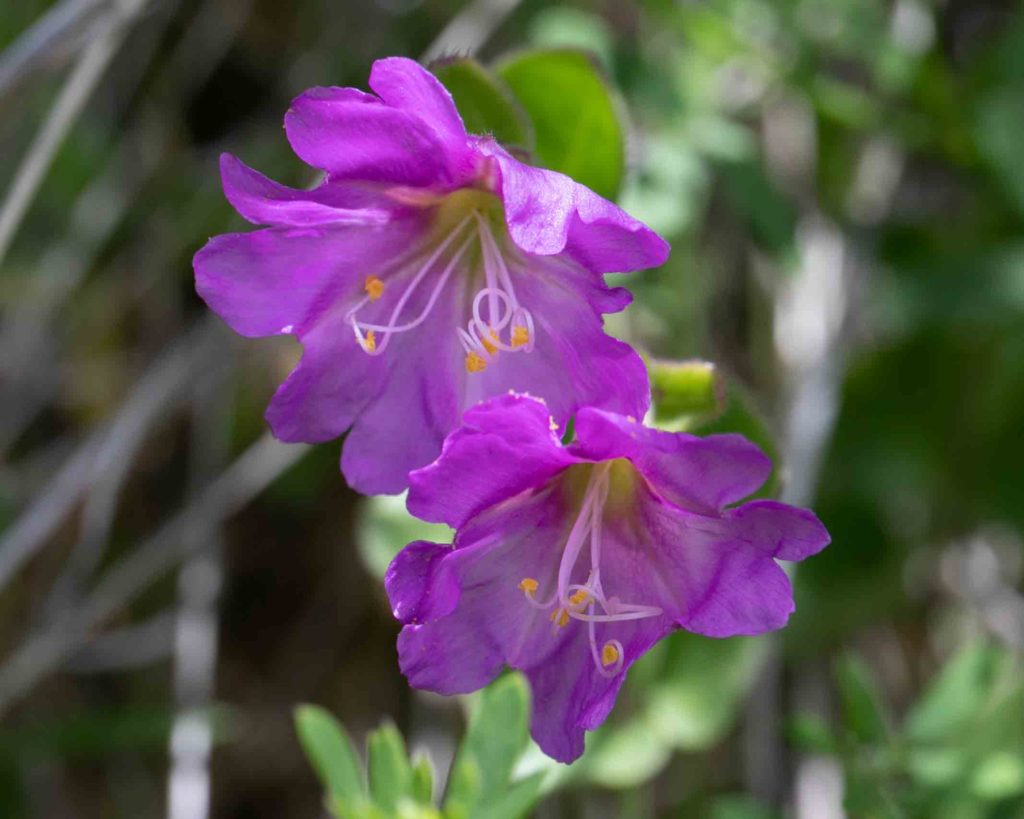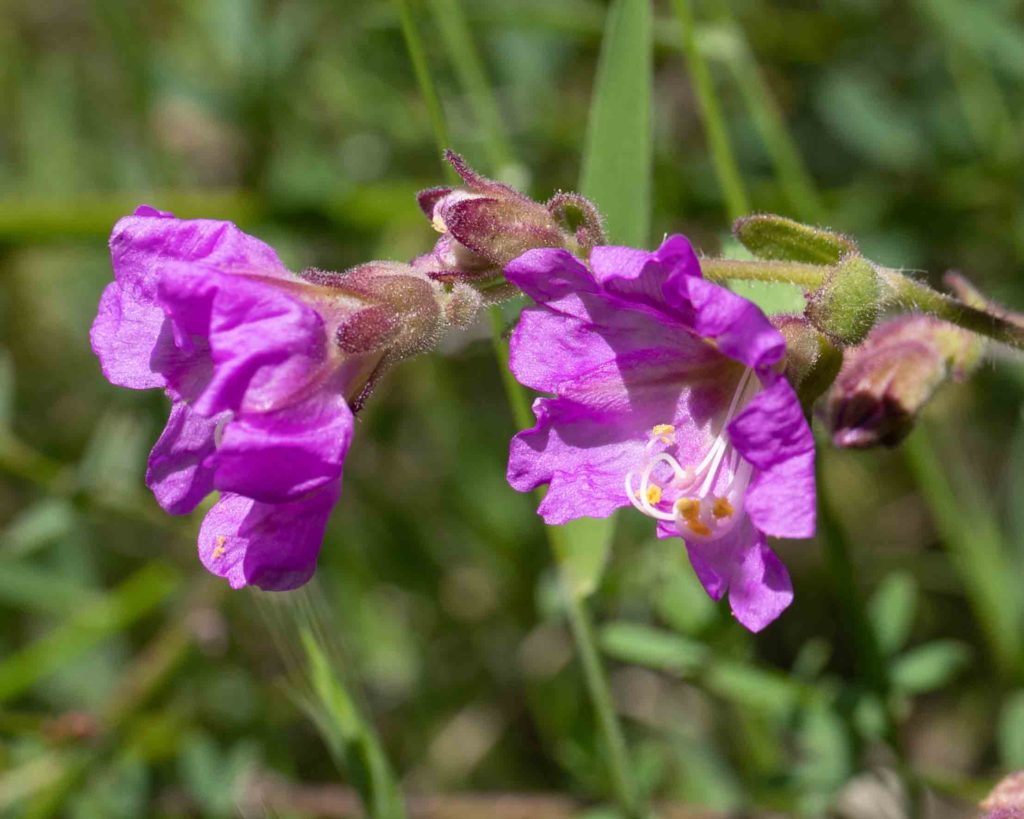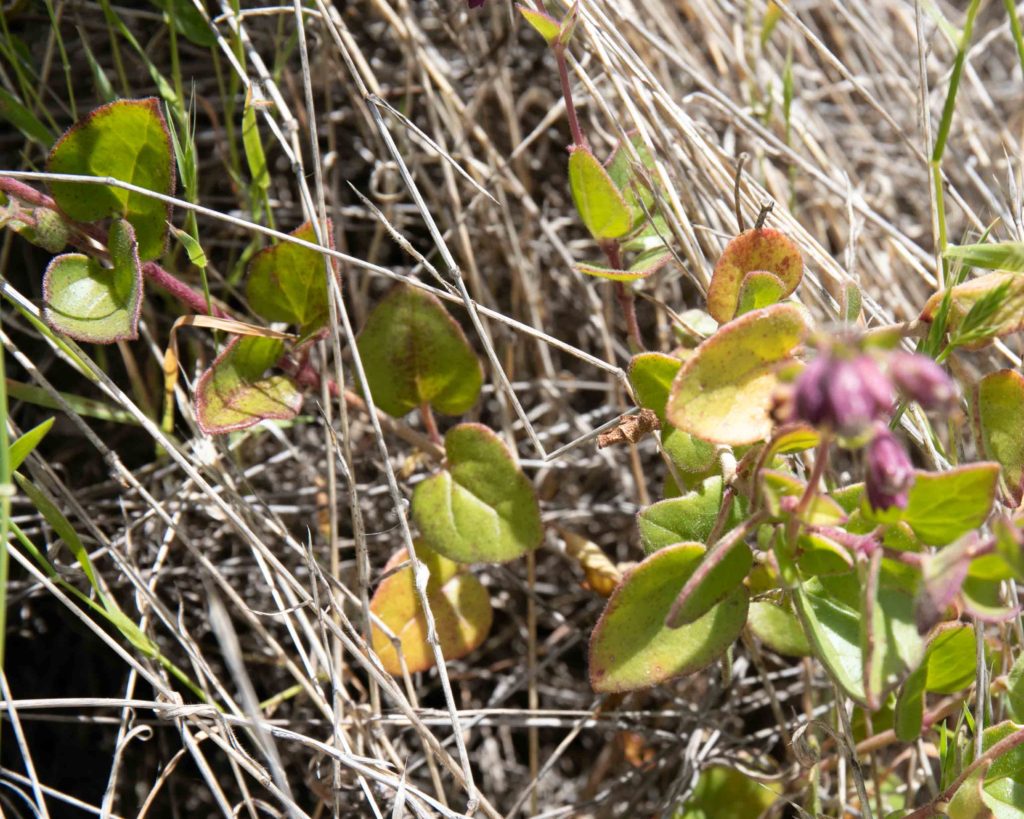Nyctaginaceae: Four O’Clock Family
Yellow Sand Verbena – Abronia latifolia
Blooms:
May–Oct
Plant Height:
Stems < 2 m
Flower Size:
Medium cluster
Origin:
Native
Habitat:
Sand dunes
Notes:
Very common and unmistakable, with its spherical inflorescences made of multiple, honey-scented, lemon-yellow flowers. Stems are prostrate, growing both under and above the sand. Leaves are ovate to kidney-shaped, and fleshy. Photos #1, 3 and 4 by CJH.
Pink Sand Verbena – Abronia umbellata var. umbellata
Blooms:
All year
Plant Height:
30–100 cm
Flower Size:
Medium cluster
Origin:
Native
Habitat:
Sand dunes
Notes:
Like Yellow Sand Verbena, this is very common and unmistakable, with its spherical inflorescences made of multiple, white-centered pink flowers. Leaves are ovate to diamond-shaped, erect, fleshy, and borne on rows of prostrate red stems. Photo #3 by CJH.
California Four O’Clock – Mirabilis laevis var. crassifolia
Blooms:
Dec–June
Plant Height:
< 80 cm
Flower Size:
Small–medium
Origin:
Native
Habitat:
Dry washes & slopes
Notes:
This is a trailing to ascending plant, with bright pink to purple-red flowers. They open in the evening (not necessarily at 4 pm), and close the following morning. The flowers are 5–14 mm across, broadly funnel-shaped, with 5 cleft lobes and prominently exserted, curved stamens. The leaves are fleshy, widely spreading and more or less ovate in shape. Common in more southerly counties, in Monterey this is found in southern Big Sur, and in the extreme east of the County south of the Pinnacles.
